Wallis Simpson, the Woman Who Could Not Be Queen
Wallis Simpson was born as Bessie Wallis Warfield in June of 1896. Her parents had been married only seven months previously, undoubtedly due to her impending arrival, but Wallis always insisted that they had been married the previous June. She inherited her unlikely middle name from her father, Teackle Wallis Warfield, who was the youngest son of a local business magnate. Teackle died when she was only a few months old, though, leaving her mother Alice relying on the charity of his family. They lived with Teackle’s brother Solomon for a while, and then with Alice’s sister Bessie (who Wallis was named for) before her mother remarried. Wallis was a bit of a wild child growing up, and there’s a story from her mother’s second wedding that she destroyed the wedding cake to try and stop the marriage. It’s not surprising that she got packed off to boarding school after that.
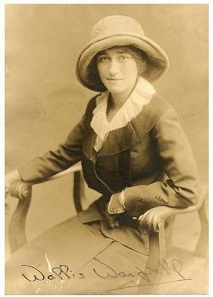
It was thanks to Uncle Solomon that Wallis attended one of the most prestigious schools in America. There she rubbed shoulders with the unspoken royalty of America like the du Ponts, and with a cutlery heiress named Mary Kirk who became one of her best friends. She was the most driven girl there, perhaps because she knew that her future was less certain than theirs, and finished top of her class. It was around this time that she dropped the name Bessie (she’d previously used both her names, in the southern style) because she said “Bessie is a cow’s name”. She also gained a reputation at school for being “fast”, and she was said to sneak out after curfew to meet boys. As with a lot of her life, though, it’s hard to tell fact from later slander. [1]
In 1916 Wallis was visiting her cousin Corrine, who was married to the commander of America’s first naval airbase. [2] There she met a dashing young pilot named Earl Winfield Spencer, known to one and all as “Win”. After a whirlwind romance they were married only seven months later. Her schoolfriend Mary Kirk was a bridesmaid at the wedding. Wallis would grow to regret this haste, as she soon found out that Win was both abusive and an alcoholic. The latter was reportedly what led to him crashing his plane the following year, and might be why he was sent to San Diego to train pilots to fight in World War I, and not to the front to lead them. The couple separated in 1921, after several years of Win beating and raping Wallis [3] culminated in an attack that left her convinced that if she stayed he would kill her. Though they had a few brief reconciliations when he tried to convince her he had changed, it never lasted.
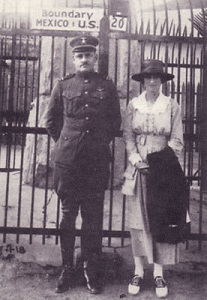
In 1924 she traveled to China, where Win was stationed, as he convinced her he had changed. Of course, he hadn’t. Still, Wallis found China fascinating and stayed there for almost an entire year. This period came to fascinate later tabloids, with claims of a “China dossier” of event there that was then used to blackmail her. The tamest version of this says that she had become pregnant by an Italian count and had an illegal abortion (which the rumour claims was why she never had children). The most outrageous version claims that she moonlighted in a Chinese brothel and learned a variety of professional sex techniques with names like the “Shanghai Squeeze”. While that’s unlikely, it is definitely possible that someone managed to get some handle on her in Beijing – though who would be an interesting question.
Wallis returned to America in late 1925. Having made up her mind to divorce Win she had to stay for a year in Virginia, one of the few states in America where that was legal at the time. The few breaks she could take without compromising her residency she spent in New York, visiting her old friend Mary Kirk (or rather Mary Raffray, as she was now). It was there that she met Ernest Aldrich Simpson. Ernest’s mother was an American, while his father was an Englishman from a Jewish family. Ernest’s father had been born as Ernest Solomon, but had abandoned his religion and his surname when he moved to America. Ernest (who never revealed his Jewish heritage during his lifetime) had chosen to take British citizenship and served in the British army during World War I before returning to New York to take up a position in his father’s shipping firm. Like Wallis, he was married – and like Wallis, he was already planning his divorce.
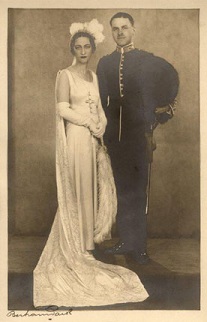
With so much in common, the two immediately hit it off. Ernest proposed early on, but Wallis was somewhat wary after her previous marriage. Her divorce went through in December of 1927, and she celebrated with a holiday in Europe. While she was there Ernest moved to London, and that was enough to convince Wallis to accept his proposal. She didn’t love Ernest in the least, but he did have a lot of advantages. He didn’t hit her, for starters – in fact, the two ended up having an “open marriage” where each was well aware of the other’s lovers. He was well off enough to support her, and now he was living in an exciting new city. Like a lot of the American unofficial aristocracy, Wallis was in love with the British official one. So the pair were married in 1928, and set up house in Mayfair. London didn’t know it yet, but Wallis Simpson, like a ticking timebomb, had arrived.
It wasn’t a perfect marriage, despite the easy-going nature of it. Ernest was well off, but maybe not quite so well off as Wallis would have liked. They could afford a maid and a cook, but they did still have to watch their spending. Ernest wasn’t as badly hit by the 1929 crash as some, but he did take an hit. Wallis’ own investments were wiped out by the crash, as was her inheritance. Her mother died towards the end of 1929 and left her nothing. Still, she did at least have some connections in London society. An old friend from her days on the Pensacola airfield was living in London, a man named Benjamin Thaw. He was married to Consuelo Morgan, and Consuelo (despite being a mix of American, Chilean and Irish by ancestry) was deeply plugged in to the London social scene. Most notably, Consuelo’s sister Thelma just happened to be the mistress of Edward, the Prince of Wales.
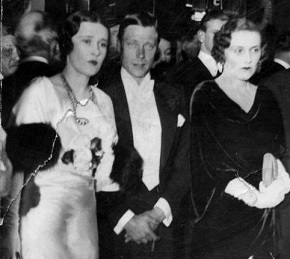
Edward was fairly notorious in England at the time for his affairs with married women like Thelma, something which his father in particular was annoyed by. In addition to Thelma he was having a simultaneous affair with Freda Dudley Ward, and in both cases this was the cause of their marriages ending (after, of course, the Prince had conveniently moved out of the picture). Keeping the royal family’s name out of any scandal was the deep unsaid principal of English law. One of Edward’s earlier mistresses, a French prostitute named Marguerite Fahmy murdered her husband (an Egyptian prince) in the Savoy Hotel. Through a combination of racism and the fact that she she happened to still have all of Edward’s letters, she was acquitted of murder. With influence like that, it’s not surprising that Wallis set her sights on the Prince.
Ironically it was Thelma who introduced the pair in 1931, but it wasn’t until 1933 that Wallis managed to get an acquaintance with the Prince. The pair bonded over shared interests – reported as needlepoint, tacky ornaments and fascist politics. Edward had convictions about the need for strong leadership, regarding his father as weak for refusing to exercise the authority of his throne. Wallis was sympathetic, and also shared his racist views. The pair reputedly consummated their relations for the first time on December 3rd 1933 in a bathtub. Unaware of this, when Thelma went away to New York to visit her twin sister Gloria she asked Wallis to look after Edward for her. She was worried about his other mistress Freda, but when she returned she soon realised that it was Wallis she should have been worried about. Both she and Freda had been entirely displaced.

The secret of Wallis’ appeal for Edward, it seems, was in her complete lack of respect for him. Edward had been raised from birth being told he was special, and there was an intoxicating power in a woman who didn’t put him on a pedestal. Her willingness to tell him when he was wrong made it more real when she told him he was right. Wallis, for her part, didn’t have any illusions about the relationship. She was married, and Edward had a reputation. She didn’t think there was any future to their relationship, but it did help that Edward was generous and she was able to have a lot more of the nice things she wanted. And the two of them got on really well as well, which helped – they would often just sit and talk for hours.
Edward’s family disapproved, of course. They found out early on, from the servants. It’s hard to keep your affair a secret from the people washing your sheets. At first they thought it was just a fling – as did Wallis and Edward themselves. But by August of 1934 the affair had involved into something more, and things got serious. When Edward introduced Wallis to his mother, it was a clear signal of intent. And scandalous, as well – divorced women, as Gertrude Blood (link!) and Jane Digby (link!) had found out, were not well-accepted in British society. The fact that Wallis was still married to Ernest, of course, was also a factor. Wallis was investigated, and every connection she had was scrutinised, every old affair dug up. The royal connection kept all scandal out of the British press, though the American press did come sniffing around. Still, a lid was kept on the affair – for the moment.
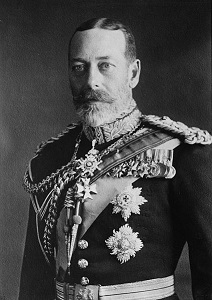
On the 20th January 1936 King George V of England died. He had been ill for five days, and was entering his final decline. The actual cause of death, however, was an overdose of morphine and cocaine administered intravenously by his doctor. The doctor was a supporter of euthanasia, and felt that the king should die with dignity. The involuntary euthanasia took place at 11pm – timed by the doctor to be able to make the morning edition of the newspapers. [4] The following morning, the whole world knew that Edward VIII was the new King of England. Wallis Simpson must have wondered if this was what would be the end of their relationship. She needn’t have been concerned. According to legend, the first thing Edward VIII did that morning was to abolish “Sandringham time”. [5] The second thing he did was to phone Wallis and give her the news. Later that day she was by his side as he watched the proclamation of his accession to the throne from the windows of Sandringham.
Things did cool off between them for a while though – mostly due to the huge amount of official business that the new monarch had to attend to. Wallis took a holiday to Paris, and while she was away her husband and her lover actually met up to decide what they were going to do about her. By this stage her marriage to Ernest was in name only, but he still cared about her and he meant to make sure that Edward didn’t plan to mistreat her. Edward made his intentions clear – he wanted Wallis by his side at the coronation. Wallis was annoyed that the two met up behind her back, but she agreed to collude with Ernest on a divorce. The easiest way was for one of them to commit adultery, but obviously neither Wallis nor Edward wanted the scandal of it being her. So Ernest agreed to take the fall. At the time he was actually having an affair with Wallis’ old friend Mary Raffray (nee Kirk), so the pair checked into a hotel together under their own names. (Despite her own situation, Wallis never forgave Mary for her “betrayal” of falling in love with Ernest.) This gave the evidence, so the stage was set.
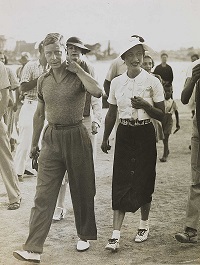
The English establishment were all deeply upset by all of this. Under Anglican church law at the time, though divorce was permitted the divorced party could not remarry while their spouse was still alive. This wasn’t national law, so it wasn’t legally binding, but since Edward was now the head of the Church of England for him not to follow church law was considered a huge scandal. [6] In addition divorce did still carry quite a stigma in “polite” society. On the other hand, Edward’s glamorous lifestyle and charisma made him hugely popular among the working classes. Papers like the Daily Mail came out to champion him. Another champion was veteran politician Winston Churchill, champion of the back benches. Whether it was because he liked Edward or because he saw an opportunity to shore up his own support, Winston was one of the few in Parliament willing to argue the King’s side.
In October of 1936 Wallis filed for divorce from Ernest. [7] In November Edward officially informed the prime minister, Stanley Baldwin, of his intention to marry her. It’s hard to imagine this came as a shock to him. Baldwin had been in politics for the last thirty years (he was sixty-nine) and this was his third stint as Prime Minister. He was deeply suspicious of Wallis, more on political than moral grounds. Not only was she known to be sympathetic to Germany (who were at the time the big unvoiced concern of the British government), but Baldwin was worried that she would inspire Edward to re-assert royal authority over parliament (which had been gradually slipping over the last century) and trigger a constitutional crisis. Edward’s suggestion that they have a “morganatic marriage”, where she would become his wife but not his queen, did nothing to allay these concerns. [8] Instead Baldwin ended the meeting warning the king that the people would not accept Wallis as their queen.
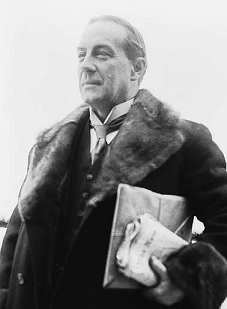
The first most of “the people” heard of the affair was on the 2nd December. The previous day the bishop of Bradford had given a speech which, to those “in the know”, seemed to allude to Wallis and Edward’s situation. The press took this as a sign that it was now okay to discuss it, though the bishop in fact had no idea about the impending constitutional crisis. But now the genie was out of the bottle. Though some papers (such as the Daily Mail) came out strongly in support of the King, the majority of the public seem to have been strongly against her. Those who weren’t scandalised by her two divorces were unwilling to accept an American as queen. Graffiti started appearing declaring “Down with the American whore!” The whole mood seems to have been summed up when Winston Churchill asked Noel Coward at a party why the king shouldn’t be free to marry “his cutie”. Noel replied:
Because England doesn’t wish for a Queen Cutie.
There were rumours at the time that Churchill’s support for Edward was part of a plan on his part to regain political power by forming a “King’s Party” in Parliament. There might have been some foundation to this – it seemed clear that if Edward did have his way, then Baldwin (who had become the face of opposition to the marriage) would have to go. Another high-profile supporter of the king was Oswald Mosely, leader of the British Union of Fascists. The fascists in general were strong supporters for re-asserting royal authority, and this seemed like a good opportunity to do so. But these supporters were few and far between. During the time between Edward’s announcement and the public revelation, Baldwin had been hard at work gaining the opinion of the various commonwealth leaders as well as the other leading opposition politicians in Britain. The consensus was simple – Edward could not marry Wallis if he remained King.
There was no real solid basis for this. The sole restriction on royal marriage in Britain was that the monarch could not be married to a Roman Catholic. Instead this was based on the principle that the rule of the monarch was based on the consent of the people to be ruled – a principle which had led to civil war three centuries earlier. When on the 3rd of December Edward gave him notice that he intended to make a speech on the BBC announcing his intention for a morganatic marriage, three centuries didn’t seem that long ago. Baldwin blocked the speech, and for the first time Edward became aware of the widespread political consensus against him. On the 4th December he sent Wallis (under protest) away to France, to protect her from the consequences of what he was about to do. The following day he told Baldwin that he intended to abdicate.
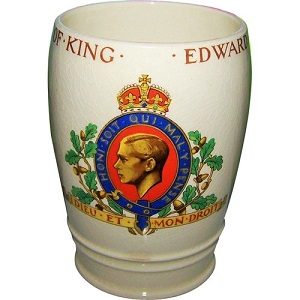
Edward signed his abdication notice on the 10th December, and on the 11th it was made law by an act of Parliament. He had been king for less than ten months – not even long enough to have his official coronation. His younger brother became King George VI, and he gave Edward the title of “Duke of Windsor”. Edward left England almost immediately, though now that his connection to Wallis was public he could not join her in France. Her divorce had not yet been finalised, and since it was based on Ernest’s adultery it could be derailed if she was shown to be having an affair of her own. Instead Edward stayed in Austria, at a castle owned by the Rothschild family. On the 4th May 1937 Wallis’ divorce became final and she was reunited with Edward. Just over a week later on the 12th, on the date originally set for Edward’s coronation, George VIII was officially crowned as monarch.
Wallis and Edward were married on the 3rd June 1937. She became Duchess of Windsor, though due to a specific decree by George VIII she was not to be addressed as “your Royal Highness”. This was one of the things that fuelled Wallis’ resentment of her husband’s family, and most specifically George’s wife Elizabeth. There was a rumour among Wallis’ supporters (spread by Oswald Mosely’s wife Diana) that Elizabeth had engineered the abdication by turning George against Edward because she had originally wanted to marry the elder brother. Wallis gave her sister-in-law the nickname “Mrs Temple”, because she felt that the new Queen used her children like a show-biz mother. (This also led to her giving the future Queen Elizabeth II the nickname “Shirley”.)
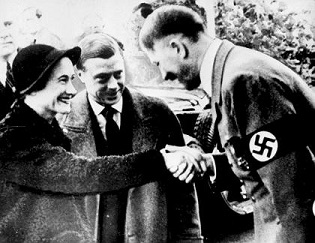
The newlyweds went to Italy and Austria for their honeymoon, and once that was done decided to try and get themselves some good publicity by touring housing developments in Germany. Nazi Germany. On this trip they met several high-ranking German officials including the chancellor, Adolf Hitler himself. This visit was the kernel of the later story that Edward had been hustled off the throne because of his Nazi sympathies. There doesn’t seem to be much substance to this, not least because Nazi sympathies were hardly something that British aristocrats kept secret at the time. But it did make for a good narrative (especially after the war), and so generally accepted history became “the real reason Edward was deposed was because he was a secret Nazi”.
When the inevitable war against those Nazis broke out in 1939, Wallis and Edward had settled down in the French Riviera. They were persona non grata back in Britain, and though they’d considered moving to America the prospect of press attention made them decide to stay put. So they found themselves on the front line of a war against the people they considered among their few international allies. The outbreak of war did lead to their first return visit to England since 1936, though by now the Duke (seen as a Nazi sympathiser) was much less popular than he had been. Edward did volunteer to serve though, and he was attached to the British military mission in Paris. There were rumours that his indiscretion there led to plans for the defense of Belgium, though nothing was ever proven. When Germany invaded France the Windsors fled south to Spain. Wallis met the US ambassador there and gave him her opinion that the reason for France’s abrupt collapse to the Nazi forces was because it was “internally diseased”.
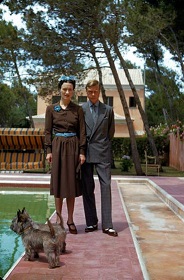
The Windsors then became the targets of a German plot. “Operation Willi” was the blanket name for a plan by Joachim von Ribbentrop, former ambassador to the UK during Edward’s reign and now foreign minister of Germany, to somehow bring Edward into the Nazi fold for use against Britain. Spain was officially neutral, but its ruler Franco was a fascist and thus not unsympathetic to Germany. The Spanish foreign minister was brought in on the plot, which mostly consisted of trying to convince Edward that the British people had turned on him and the OSS planned to liquidate him to prevent him turning. Stones were thrown at his house as a false flag operation, and false warnings from “British sympathisers” were passed on. The plan was derailed when Edward decided to leave Spain, and though the agents tried to use a bomb hoax to delay him and persuade him, he was not convinced before he left for Lisbon.
The British authorities were aware of the threat Edward posed, so they decided to get him out of the way by appointing him governor of the Bahamas. Edward was well aware of the nature of this appointment and deeply resented being shipped off to a “third-rate colony”. (Especially one populated by black people – Edward, like Wallis, was deeply racist.) It might have been this frustration that led to him giving an infamous interview to Liberty Magazine in which he praised Hitler and said that President Roosevelt should mediate a peace settlement in Europe. Churchill wrote to Edward to complain about his “defeatism”. Many in England saw the Duchess’ hand behind this, and her reputation as a Nazi sympathiser increased. She also gave an interview to a reporter named Adela St. Johns, where she made the somewhat indiscreet comment:
I would much rather have been the mistress to the King of England than the wife of the Governor of the Bahamas!

The main thing the Duke’s time as governor of the Bahamas is remembered for, though, is the murder of Sir Harry Oakes. Oakes was a prospector who had struck gold in Canada in 1911, discovering what turned out to be one of the largest gold mines ever found in the Americas. Oakes had become a British citizen and moved to the Bahamas in 1935, in order to avoid paying tax in his retirement. He had invested heavily in improving the colony, and had become a personal friend of Edward and Wallis after he arrived. In July of 1943 he was found battered to death in the sitting room of his house in Nassau.
Edward didn’t trust the local police to investigate the murder, but the war meant that sending detectives out from Scotland Yard (as would have normally been done) was impossible. So Edward decided to import two detective from Miami to “assist”, which in practice meant taking complete control of the investigation. They decided fairly on that Oakes’ son-in-law, Count Alfred de Marigny, was their prime suspect. In fairness, he may well have been the killer – but the detective’s clumsy fabrication of evidence to establish their case against him had the opposite effect they’d intended. It was detected, and the Count wound up being acquitted in a sensational trial. To this day the murder is officially unsolved.

While the Oakes case is what the Windsor’s stay in the Bahamas is most remembered for, it wasn’t the only thing that went on. As the First Lady, Wallis was responsible for the Red Cross and charity work on the island, and whatever her personal opinion of the colony she threw herself into this work whole-heartedly. She opened the first STD clinic on the islands, and on her trips to America she solicited donations from her rich friends which went towards establishing an infant welfare clinic. She also released a cookbook to raise funds for British War Relief, Some Favorite Southern Recipes of The Duchess of Windsor. Nowadays the one that people immediately notice is a recipe for “Pork Cake” – sometimes erroneously supposed to be a wartime cake substituting pork fat for butter. In actuality pork cake is a genuine Southern US dessert, though not one that appeals much to modern tastes. More prophetic were her “favourite foreign recipes” – which included the modern British favourites chicken madras and risotto.
When the war ended Edward resigned his position as governor. It would have been traditional for an ex-Governor like Edward to have been received at court, but both his mother and sister-in-law vetoed this. The Windsors moved to New York where they became part of the “jet set”. Even a tarnished pair of British royals lent a cachet to any party, after all. They spent most of their time in America, though they did make a few visits to England to see old friends. On one of these visits Wallis’ jewelery was stolen. It’s a sign of how unpopular she was that most were convinced she’d done it herself in order to claim the insurance money, though the real thief eventually confessed in 1960.

That wasn’t the only scandal from this period of their lives – they became involved with a noted American socialite named Jimmy Donahue. If you believed the rumours about Donahue he was a murderous homosexual rapist who used his family wealth to keep himself out of jail. Most of these stories are probably exaggerations, of course, though he was pretty flamboyantly homosexual. Despite that, rumours abounded that he and Wallis were having an affair – some people claiming this was how Jimmy’s mother persuaded the ex-royals to attend her parties. In reality the real reason Wallis hung around with Jimmy was probably just because Edward was getting too old to be bothered with all-night partying, and the flamboyant Jimmy wasn’t going to make him jealous. The friendship did end abruptly after an argument at a party. Reportedly Wallis remarked on Jimmy’s bad breath, and he kicked her a little too hard under the table – enough to draw blood. Edward threw him out of the party, and that was it.
King George died in 1952, and Queen Mary (mother of George and Edward) died in 1953. The funerals seem to have given Edward a chance to form a truce with his family, possibly because Wallis was wise enough to stay away. Both she and Edward had memoirs ghost-written in the 1950s. His, A King’s Story was largely a chance to slam liberal politics while Wallis’ memoir, The Heart Has Its Reasons, was an attempt to rewrite history with herself as its heroine. Neither sold particularly well but they did proved a reasonable source of income. The pair moved from New York back to France, where they had a house in Paris and a country home next to their old friends Oswald and Diana Mosely. The two couples bonded over a common belief that, in Edward’s words:
I thought the rest of us could be fence-sitters while the Nazis and the Reds slogged it out.
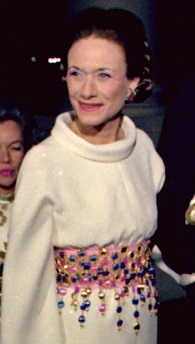
(Edward did also blame the war on “Roosevelt and the Jews”, of course.) The tentative truce with Edward’s relatives forged in tragedy held up, as when the Duke returned to London for eye surgery Queen Elizabeth II visited them in hospital. She also visited Edward in 1971 when he was diagnosed with throat cancer, which claimed his life the following year. By prior agreement with the Queen he was buried in the Royal Burial Ground, the traditional resting place of members of the royal family who were not sovereigns. The Queen also granted Wallis a pension, though she was already beginning to suffer from dementia. Her French lawyer Suzanne Blum managed her affairs, and in the opinion of many ruthlessly exploited the old Duchess. This was an easy task, as Wallis deteriorated to the point of being unable to speak by 1980. She died in 1986, and was buried alongside Edward in the Royal Burial Ground – in death, finally being accepted into the royal family as one of its own.
Images via wikimedia except where stated.
[1] For example, this is the sole mention I will make of the “theory” that Wallis was intersex in some way. This seems to be based entirely on people describing her jawline as “mannish”.
[2] Not their first military airbase, but the first one controlled by the navy. To this day the US Navy maintains its own separate air wing.
[3] Legally at that time a husband could not be considered guilty of raping his wife, which reveals an awful lot about the attitudes of the time.
[4] The doctor didn’t actually tell anyone what he’d done at the time, of course. None of this came out until fifty years later.
[5] From 1901 to 1936 the official timezone in the royal palaces was a half hour ahead of the rest of the UK – “in order to create more daylight in the evenings for hunting”. Getting rid of this weird and confusing state of affairs might have been the greatest achievement of Edward’s reign.
[6] Given the circumstances of that church’s founding, this is all pretty ironic.
[7] She did so in Ipswich, where the waiting time for a hearing was shortest. This led to one American tabloid printing the headline: “King’s Moll Reno’d in Wolsey’s Hometown”.
[8] A medieval tradition dating back to when powerful aristocratic families would have been extremely unhappy if the king or queen frustrated their games by marrying a commoner. In addition to preventing Wallis being Queen, it would als mean any children they had would not have been in line for the throne.
